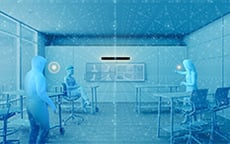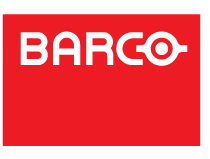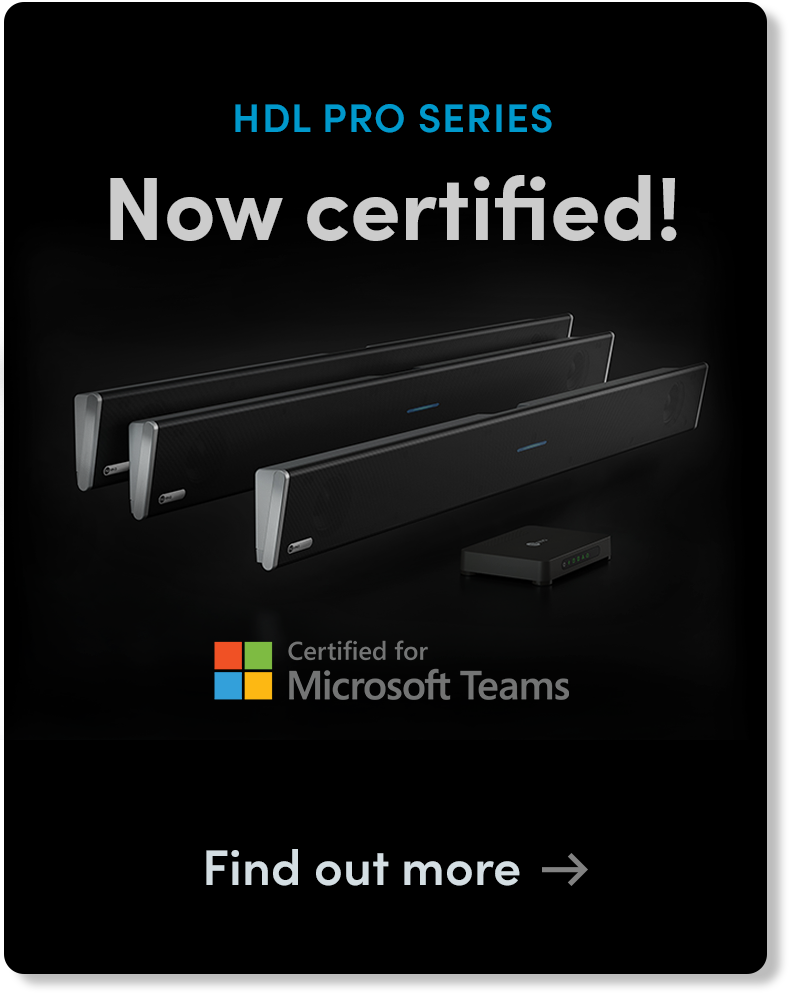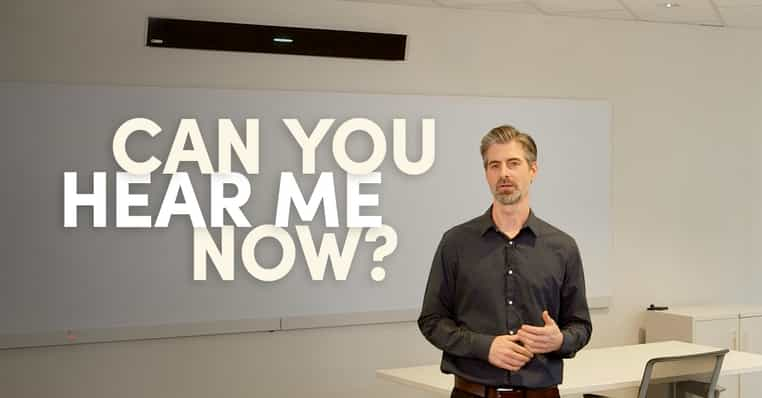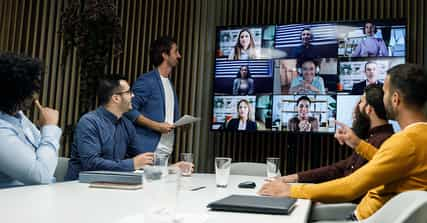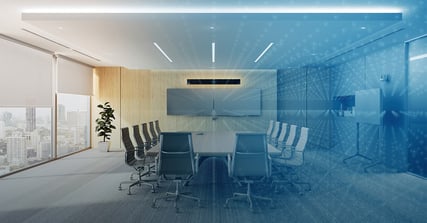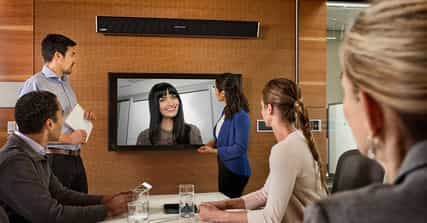The shift to hybrid working and learning has created new challenges that demand more from meeting room and classroom audio products.
In this video from ISE Digital 2021, you’ll hear three members of our Nureva team – Robert Abbott, vice president, products; Susan Jickling, director, international sales; and Nancy Knowlton, CEO – share their insights into our new reality. They outline some of the opportunities they see, share real stories of hybrid success and explain how our entirely new approach to microphone technology is uniquely suited to the challenges that lie ahead.
Video transcription
The shift to hybrid working and learning creates new challenges and pain points and puts new demands on the technology meant to support it. Our customers are telling us that the shift to hybrid will persist, and collectively we shouldn’t just simply fall back to the way things were.
Increasingly, remote participants will be the norm. Participants in the room will want to be socially distanced and still be heard. We’ll see offices’ need to adapt to this new way of working, and hybrid classrooms will just become commonplace.
These shifts will put greater demands on audio technology and in fact move audio to the core of making good collaboration work. Organizations will look for economical, affordable solutions as they look to equip more and more spaces with great audio.
I want to talk about the practical realities of some real spaces.
School classrooms
First, let’s consider schools. Tech directors now need to consider three completely different scenarios. They need technology that supports a scenario that’s 100% remote, a scenario that’s hybrid and then eventually a scenario where the class can be full of students again.
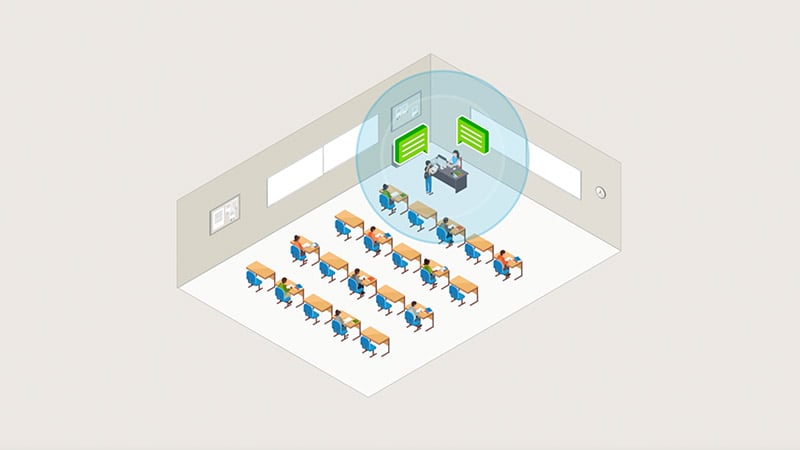
Teachers, they have many challenges. Not only do they need to facilitate a dialog between themselves and remote students, but they need to facilitate a discussion between the in-class students and the remote students.
When we talk to teachers, they really stress this dialog is what’s missing in their hybrid classrooms. And they really feel that the ability to move around the classroom freely and teach is one of the biggest things they miss.
Higher education
Second, let’s talk about universities. A year and a half ago, if you can imagine a campus, they had two IT staff. They were responsible for tech enabling maybe 10 lecture halls.
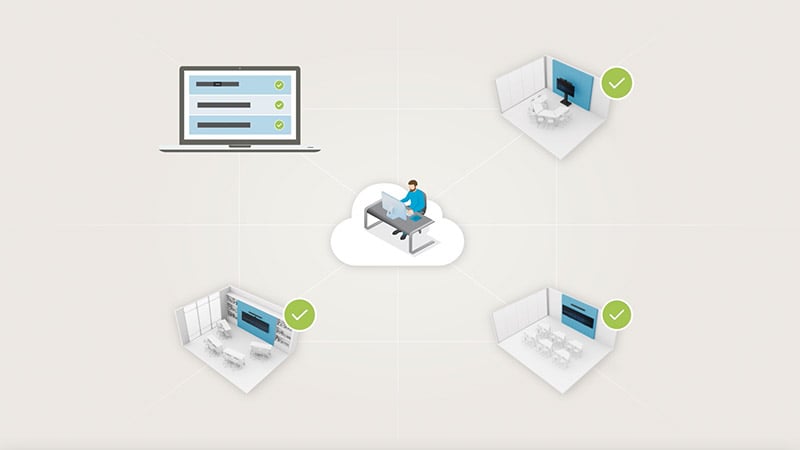
Fast forward to today and the same two people have to equip 85 classrooms and they have only two months to do it. Device management and scalability and ease of install are going to become critical.
Hybrid work
Third, let’s talk about offices. The general thinking is that people will stay at home to work but they’ll go in the office to meet and collaborate. As people move back into the offices there just simply won’t be enough of the type of spaces to facilitate these larger collaborative sessions.
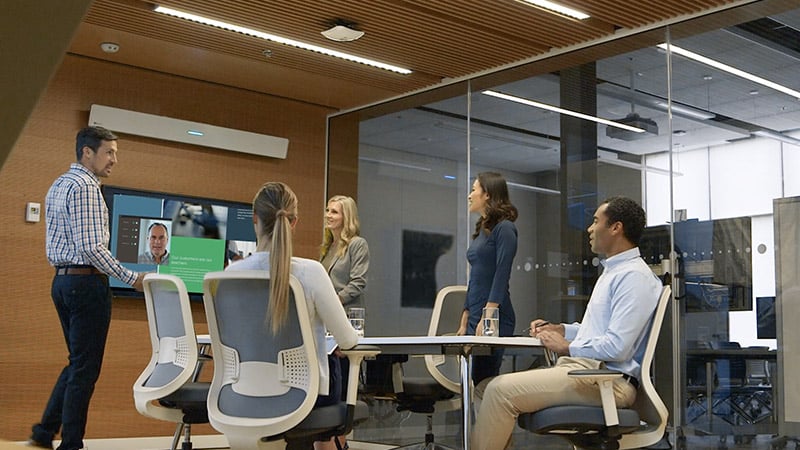
Companies are looking at adapting their spaces. They want rooms that can meet several different needs, that have flexible furniture. We’re seeing lots and lots of more divisible rooms, rooms that can be turned into one large space and then broken into smaller meeting rooms.
Technology that’s flexible enough to handle these changes will be critical.
New demands on audio technology
These ever-changing circumstances demand technology that delivers natural audio experiences so people are heard regardless of the environment they’re in.
It demands technology that automatically adapts to unforeseen changes in the environment. It demands technology that’s easy to install, simple to set up and doesn’t require audio expertise.
Lastly, technology needs to have upside. It needs to have room to grow, to be flexible, to adapt to some unpredictable changes in the environment. At some point older technologies like beamforming, they just inherently reach their limits. They just run out of runway.
And at that point, it’s time for some innovation. It’s time for invention.
Microphone Mist technology
These challenges are what drove the creation Microphone Mist technology.
Microphone Mist technology is a very different approach to picking up sound in a space. Instead of taking a microphone and pointing it in a specific direction, it creates a mesh of individual pickup points, virtual microphones, so that audio is heard throughout a space – corner to corner, from ceiling to floor.
Microphone Mist technology evaluates sound at thousands of virtual points throughout a room and in near real time decides the best sound source to focus on. The results are remarkable.
Think of Microphone Mist technology as a platform, a suite of audio technologies. Let me give you some examples of what it can do.
First let’s talk about full-room audio coverage. For any audio technology, pickup – ensuring people are heard – that’s job number one. But different audio technologies have different assumptions.
Microphone Mist technology assumes that the spaces that our technology is used in are messy. They’re real world – furniture is being moved, people are up, they’re active, they’re looking in different directions, they’re writing on whiteboards. Our default isn’t a group of people sitting around a boardroom table all facing in the same direction.
Back to the school example. Our assumption is that students sitting in the back of a typical classroom can have a conversation with a remote student sitting at home at their desk in their bedroom. In fact, it’s our obligation to ensure that that conversation can happen.
Another powerful feature of Microphone Mist technology is intelligent sound targeting. Intelligent sound targeting ignores persistent unwanted sounds in a meeting space – a good example of that is HVAC or fan noises from projectors or displays. Intelligent sound targeting leverages the unique nature of virtual microphones and by ignoring the persistent unwanted sounds, it can more consistently focus on things like people’s voices.
Microphone Mist technology also includes continuous autocalibration functionality. In this new hybrid world, spaces will change, room layouts will change. Technology needs to adapt to those changes.
Imagine back to that office environment we were talking about earlier. What would happen if each time a business reconfigured their office, or went from a single room layout to a divisible room layout, they had to call in an audio expert? They had to refine or tweak the lobes of their beamforming. At the very least that would be very expensive, but I think in this new hybrid world it would just be a showstopper.
The system continually monitors the room and recalibrates and adapts to changes within the space. Technically how this works is embedded within the sound master are structured sound impulses. Those impulses reflect off the surfaces of the room. Our microphones pick those up, and based on these we can measure the acoustic properties of the room.
As a final example, let’s go beyond core audio or audio pickup. Microphone Mist technology also has the capability to measure room acoustics and take these measurements and turn them into insights and then turn those into improved user experiences. Let me give you a few examples.
Based on our background noise insight, we can automatically change the bass settings in a space. We can turn up the bass if we notice that the background noise is loud. We could also turn that into data and insight and share that with the IT manager or the facilities manager, perhaps suggesting a problem with their HVAC.
And then lastly, we could take this even further. For example, in a classroom, if the background noise is consistently loud, we can infer that the students at the back of the room just won’t be able to hear. And we can suggest to the teacher that they use things like voice amplification.
Hybrid working and learning is here to stay. The challenges it presents are real but solvable.
We are confident that Microphone Mist technology is your right technology choice.
Benefits for everyone
Nureva is always focused on developing products that are simple to use. Participants need to be able to act natural and not adjust their behavior due to limitations of technology.
Often remote participants have difficulty hearing when there’s more than one person talking in the meeting room at the same time – called simultaneous talking. How Microphone Mist technology handles this is with thousands of virtual microphones it smoothly transitions from one virtual microphone to the other so you don’t hear the clipping or the distortion that is often heard with other systems.
It’s important to focus on the people that manage the room as well. They need a product that’s affordable, that’s flexible and meets their users’ needs.
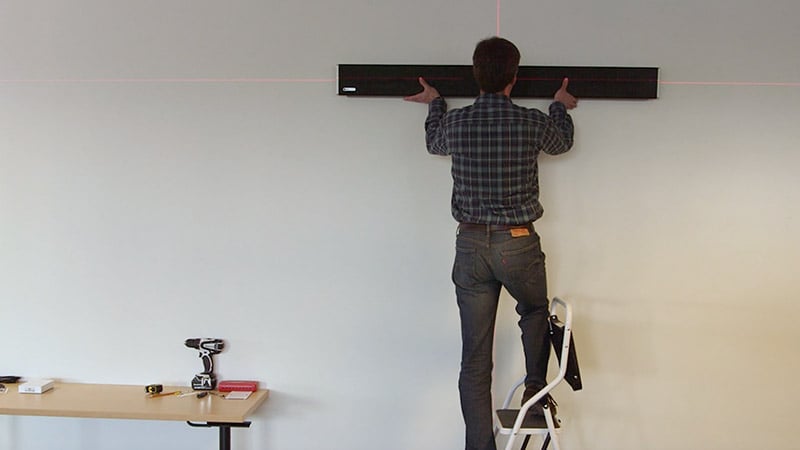
The installation is simple – there’s no specialized skills required. And it usually takes less than 60 minutes. This minimizes the downtime for the room. There’s no external DSP or speakers needed, keeping it very affordable.
Nureva includes the ability to manage all your devices remotely from a secure, cloud-based dashboard. Firmware upgrades mean the technology is getting better and smarter, so we’re ready for the future.
What our customers say
As we speak with our customers and prospects, it’s interesting to hear the new challenges and needs they have with preparing for a hybrid work model. The reality is there’s always going to be a remote participant, whether it’s in a classroom or a meeting. It’s great to see the prioritizing of the technology to ensure the remote participants can be engaged and active in the discussions.
Over the last 12 months we’ve had a lot of discussions with universities looking to transition to a hybrid learning environment. They see a need to make sure that their remote learners have the same experience or a similar experience as the learners that are in class physical distancing.
We’re starting to see the same in the corporate market – with more people being vaccinated and heading back to the office, the need for technology that will support remote participants is increasing. I’m excited to share with you some examples of why some of our customers chose Nureva products.
Universidad Europea
The Universidad Europea was looking to transition over 200 classrooms to a hybrid learning environment. They wanted to ensure that their remote learners had the same quality education as the learners that were in the class. To do this they evaluated four different types of audio technology. They created four classrooms, all testing the technology.
What they really liked about Nureva is the full-room audio pickup. They also liked that Nureva was easy to install and quick to set up. Transitioning 200 classrooms that quickly, they needed minimal downtime. The other important part was that it was compatible with the other technology they were using. It was great that in over 200 rooms they went with the HDL300 product.
Kellogg’s
Kellogg’s transitioned to a Microsoft® Teams environment, and when they did this they also looked to upgrade their meeting technology.
When looking at the technology, they wanted to make sure it was Microsoft Teams certified. They also had different spaces that they needed to equip. Some of those spaces had high ceilings. Some had glass walls. So they really liked the flexibility that Nureva HDL300 had with installation. It didn’t matter where in the room they placed it, they would always get quality full-room audio pickup. They were also looking for a low-touch environment for their users.
BASF
BASF is one of the world’s largest chemical companies. We started back with them in 2018 – they used our HDL300 in their Cisco® video conferencing rooms. They started to see the need for increased remote meeting spaces, so they moved to Cisco Webex®. In doing this they had an internal IT department that would focus on testing technology that worked with Webex.
What they really liked about Nureva is the true full-room pickup. They also liked if there are any changes or adjustment done to the furniture, Nureva’s continuous autocalibration would adjust for those changes. BASF is now starting to roll out Nureva products in their new meeting spaces.
Leiden University Medical Center
Leiden University Medical Center was a neat situation a little bit different than some of the other universities. They were looking to equip 70 rooms. These rooms were a little bit larger than what we’d recommend for the HDL200, but because the rooms were really acoustically strong, there wasn’t a lot of issues with them. They ended up testing the HDL200 and the full-room pickup worked very well.
Some of the things they were really looking for is they were very focused on their budget, and they wanted to be able to do the install themselves. When they tested a couple different technologies, they found that HDL200 was perfect for the job. This was an exciting one because not only did they do their own install, but they were also really happy that Nureva had Console.
Too good to be true?
When people read about the technology behind Nureva audio products, they might be tempted to ask the question: Is this too good to be true? Is this technology real? Or is Microphone Mist technology just a marketing slogan?
Well, the best way for you to answer that question is to go online and book a live demo. In a 15-minute demo, we’ll let you experience the technology for yourself in a realistic, untreated environment. Glass walls. Hard reflective surfaces. And lots of HVAC noise. And you can see how Microphone Mist technology handles these and other challenges that you’ll find in modern meeting spaces.
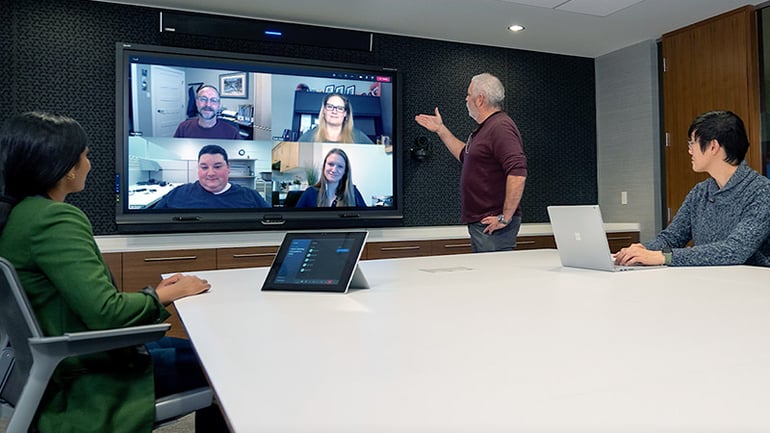
There are some other facts that we’re excited to tell you about as well. Recently, the HDL300 became the first microphone and speaker bar to be certified for large Microsoft Teams Rooms. These larger spaces are demanding. The US Patent and Trademark Office has granted us eight patents on Microphone Mist technology, and there are many more patents pending. And recently Frost & Sullivan bestowed one of their innovation and leadership awards on us for the innovation in our product line.
The current capabilities in Nureva audio products are but a small example of the possibilities available through Microphone Mist technology. We continue to invest in the technology and in our patents – all from the perspective of enhancing the value that we deliver to Nureva audio customers.
We’re also investing in integrating our product with other leading products in the world. The Barco ClickShare and the Microsoft Teams Rooms certifications are but two examples of that continuing investment.
You can expect many new innovations to come from us as we continue to develop the technology, and we’ll be excited to share them with you when they’re ready. Thanks for spending the time with us today to learn about Microphone Mist technology and Nureva audio products.
Great audio, simplified
Are you tired of complicated, costly audio? There is a better way. Find out how groundbreaking technology can deliver the performance you need in your meeting rooms, while keeping everything simple and cost effective.
Posted on Jun 17, 2021 6:00:00 AM
